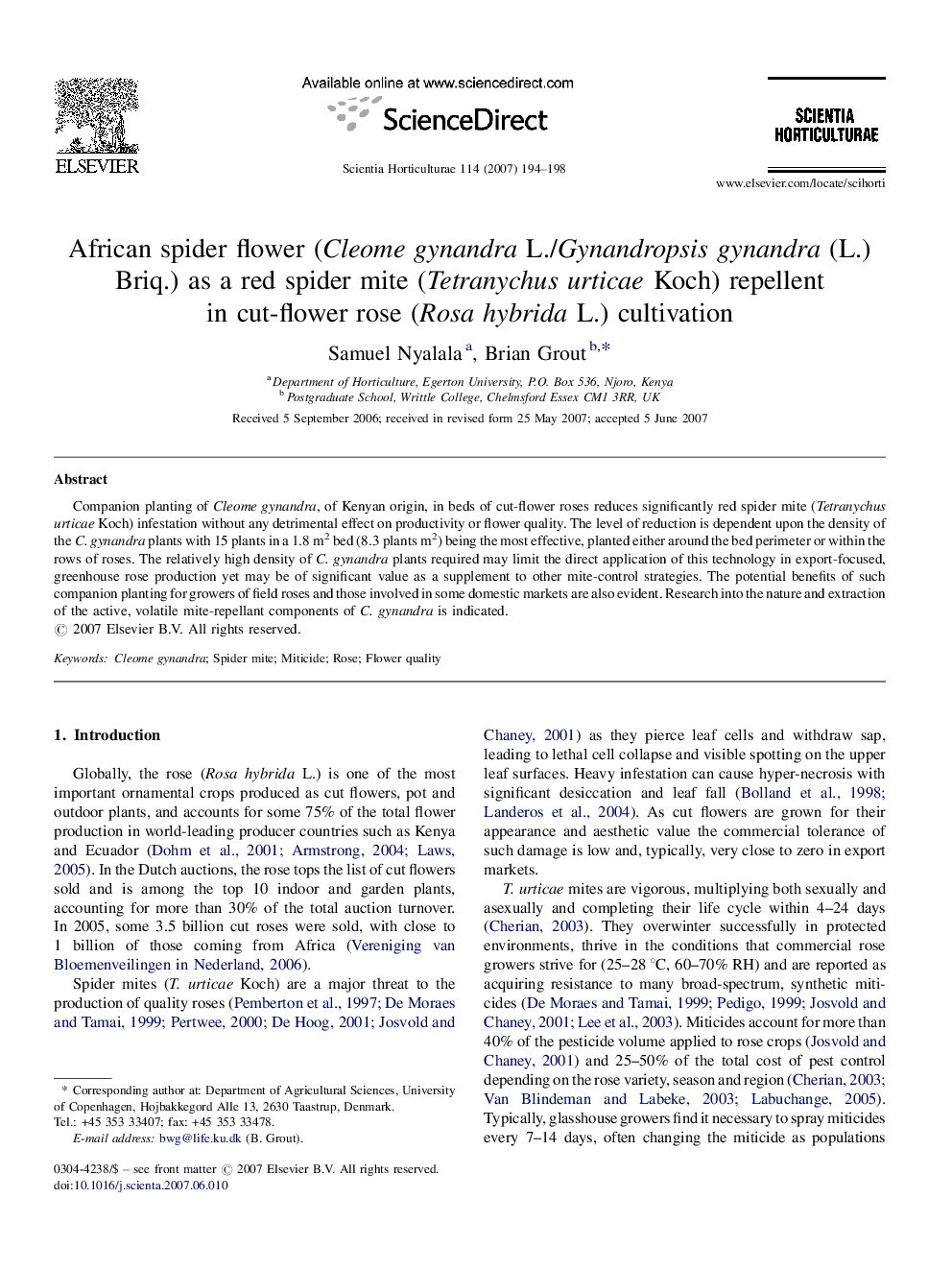| Article ID | Journal | Published Year | Pages | File Type |
|---|---|---|---|---|
| 4569524 | Scientia Horticulturae | 2007 | 5 Pages |
Companion planting of Cleome gynandra, of Kenyan origin, in beds of cut-flower roses reduces significantly red spider mite (Tetranychus urticae Koch) infestation without any detrimental effect on productivity or flower quality. The level of reduction is dependent upon the density of the C. gynandra plants with 15 plants in a 1.8 m2 bed (8.3 plants m2) being the most effective, planted either around the bed perimeter or within the rows of roses. The relatively high density of C. gynandra plants required may limit the direct application of this technology in export-focused, greenhouse rose production yet may be of significant value as a supplement to other mite-control strategies. The potential benefits of such companion planting for growers of field roses and those involved in some domestic markets are also evident. Research into the nature and extraction of the active, volatile mite-repellant components of C. gynandra is indicated.
